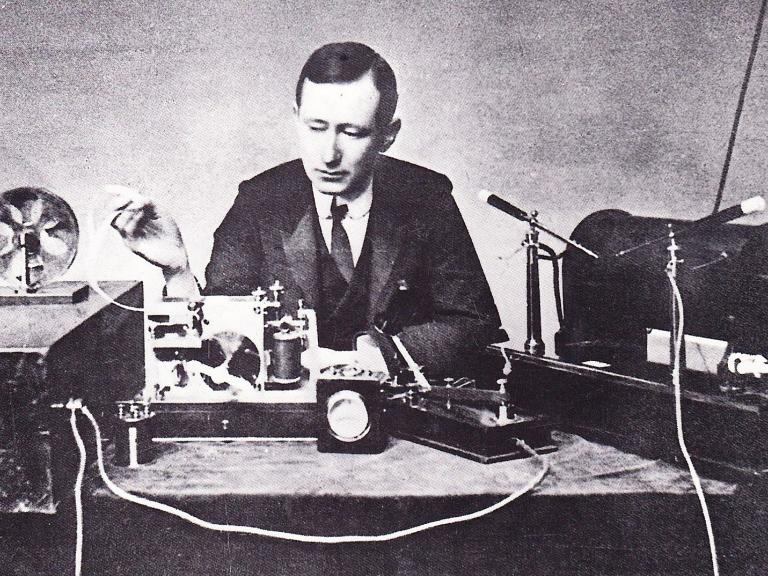International Marconi Day is a 24-hour amateur radio event held each year to celebrate Marconi's birth on 25 April 1874. This event is usually held on the Saturday closest to Marconi's birthday. This year, that date falls on 24 April.
The purpose of International Marconi Day is to connect radio amateurs around the world to the historic sites frequented by Marconi using communication techniques similar to those of the inventor of radio. A historic Marconi site is a place that has a definite link with Guglielmo Marconi.
International Marconi Day will therefore be held this year on 24 April 2021 from 00:00 UTC to 23:59 UTC. All official stations must be registered by midnight on 23 April at the latest. However, you do not need to register to claim your diploma. To be listed as an official radio station, a station must operate from a site with some connection to Guglielmo Marconi. This must be a place where Guglielmo Marconi resided for a proven period of time or a place from which he conducted radiotelephony experiments.
Guglielmo Giovanni Maria Marconi (Bologna, 25 April 1874 - Rome, 20 July 1937) was an Italian physicist, inventor and entrepreneur.

He is best known for his invention of wireless telegraphy in 1896. This made him famous in the Western world as the designer of radio. In Russia and the former Eastern Bloc, on the other hand, Aleksandr Popov is generally regarded as the inventor of radio. Both build on the work of Heinrich Hertz at about the same time.
Guglielmo Marconi began experimenting with radio waves in the attic of the Villa Griffone around 1890. After many attempts, he succeeded in sending wireless signals with self-built devices over a distance of one and a half miles (2400 metres). Among other things, he used a spark generator, an improved version of Branly's coheater and his own invention, the radio antenna. The coheater is a very old type of radio wave detector and is only suitable for receiving messages in Morse code.
Because the Italian government showed little or no interest in his pioneering work, he emigrated to Britain in 1896, bringing all his equipment with him. He was introduced by his cousin Henry Jameson Davis to William Henry Preece, Chief Engineer of the British Post Office (PTT). With the support of William Henry Preece and his cousin Henry Jameson Davis, Marconi obtained the world's first patent for his wireless telegraph system on 2 June 1896.
He successfully demonstrated this new invention in London before an official delegation from the British Post Office and the British Army. He succeeded in transmitting a radio signal over a 15 km wide estuary, the Bristol Channel.
He was able to use his mother's family's commercial network, which led to the formation of the Wireless Telegraph & Signal Company Ltd in July 1896. This company was the forerunner of the Marconi Company.
His revolutionary invention won the support of influential admirers, including Queen Victoria of England. From then on, the sovereign was able to send messages between her residence on the Isle of Wight and the Prince of Wales, who was sailing on the Royal Yacht.
Although it was clear that Marconi's invention worked, it was initially thought that due to the curvature of the Earth, the range of radio waves would be limited to 300 km. However, on 12 December 1901, Marconi proved that radio waves could travel well beyond the horizon. He used his system and was the first to transmit Morse code signals wirelessly across the Atlantic Ocean from Poldhu in Cornwall to St. John's in Newfoundland, a distance of about 3200 kilometres. This breakthrough in intercontinental telecommunications made Marconi even more famous. Yet it was not until 18 January 1903 that he was able to send a complete radio telegram, a congratulatory message in Morse code from US President Theodore Roosevelt to King Edward VII of Great Britain. A few hours later, the reply was transmitted in the opposite direction.